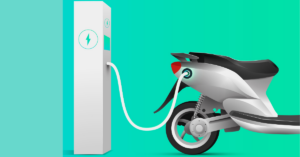With the ongoing COVID19 vaccine administration, the cold chain infrastructure needs to remain robust to maintain the transportation of the vaccines throughout the world.
It is, however, not so easy to maintain a cold chain without disruptions, given the number of transfer points from manufacturing to administration sites.
Transporters need to carry the vaccines by aeroplane and truck, which has to stop at the distributor points before reaching the terminal end, where they need to put the vaccines once again in cold storage. The last mile to the healthcare facility could be a van or bike delivery.
During transportation and storage of the vaccines, the temperature plays a key role.
If the vaccines get exposed to temperatures out of the prescribed range, they will lose effectiveness, thus becoming unfit for use.
Typically, the vaccines should be stored between -58 and 5 degrees F, if frozen, or 35 to 46 degrees F otherwise.
In practice, improper temperature takes a toll on the vaccines. It has been seen that about a quarter of vaccines get damaged by the time they reach their destination due to faulty shipping procedures. Likewise, about 20 per cent of temperature-sensitive biopharmaceutical products, including plasma, get damaged in the cold chain during transportation due to the wrong temperature.
When the temperature goes out of the prescribed ranges, it is known as a temperature excursion. According to the estimates in place, pharmaceutical companies lose around USD 34.1 billion annually due to replacement due to vaccine damages.
IoT Sensors Can Help
Pharmaceutical companies can turn towards digital technologies to manage the distribution.
With digital technologies, transporters can control the distribution effectively after the products leave the factory to their destinations.
By placing IoT based sensors in the containers, transporters can track the temperature throughout the journey until the consignment reaches the destinations–healthcare centres.
IoT-based sensors track the consignment temperatures and identify the weak links along the supply chain, such as a temperature change at a specific point in the route. As widely seen, more than 50 per cent of temperature excursions occur during airport handling. The sensors can help to track the temperature fluctuations.
IoT based sensors work with Bluetooth radio technologies to transmit data by producing a digital twin that maps the product’s transit history in real time.
In addition to the temperature, the sensors can read light, humidity, and manufacturing details like serial or lot numbers.
The sensors will send out alert signals if the temperature goes out of the set range to alert the transport personnel, who can then take corrective action.
The sensors also have a memory to store information. When a healthcare facility receives a vaccine consignment, it can check the sensor dashboard to ensure the vaccines have travelled at the correct temperature before signing off on the products. At the same time, the vaccine manufacturer will also know that the vaccines were in the correct temperature range until the final delivery.
Now, let us delve a bit deeper to understand the working mechanism of IoT based sensors.
Cloud Platforms
Effective cold chain management calls for accurate data, which plays a critical role.
As transporters need to handle many refrigerated trucks during the transportation process, they need to keep themselves aware of the temperature of the consignments, which have temperature-sensitive vaccines. IoT-based sensors can help them know the temperature during transit apart from data related to shipping delays. Moreover, the sensors can send out alerts if the temperature goes out of the set range.
All data related to shipment gets stored in a cloud platform, which has special tracking tools to gather, collect, and store data from thermal sensors.
Analytics
Data analytics is an essential feature of IoT based systems, allowing you to derive valuable insights from the data. It also helps you to manage warehouses effectively. Transporters can visualize vaccine storage and shipment statistics due to the feature.
GPS Modules
As the temperature and humidity vary from place to place, it is necessary to track the location of the vaccine consignment and the temperature during transit.
IoT based cold chain management solutions have GPS systems and thermal sensors. While GPS systems track the location, thermal sensors monitor the temperature and humidity.
Alerts
IoT based cold chain management systems will send out alert signals if the temperature goes out of the set range. The systems will send the notifications through SMSes or smartphone apps.
When truck drivers carrying the vaccine consignments receive such alerts, they can take corrective actions to prevent vaccine damage.
Likewise, transporters can redirect the truck if there is a shipment delay.
How Should Healthcare Facilities Store Vaccines?
Healthcare facilities cannot escape investing in an ultracold freezer to store COVID19 vaccines effectively. Without such freezers, the vaccines cannot remain potent and will get damaged. In such a case, they need to incur substantial monetary losses in replacing the damaged vaccine stock.
Medical facility owners should keep in mind that household refrigerators cannot store the vaccines effectively. Such units cannot maintain a stable temperature and cannot attain freezing temperatures.
Pfizer and Moderna vaccines are based on a new approach involving a new methodology of using messenger RNA (mRNA) to use cells as factories to generate a particular Coronavirus protein.
The protein generates an immune response as in a real coronavirus infection. Since it will contain only one virus protein, it cannot infect people or make them sick with COVID19. If anyone, who got a vaccination, gets exposed to Coronavirus later, his body will easily fight it off.
The Food and Drug Administration (FDA) did not previously approve any mRNA vaccines.
Conclusion
So, you can now understand why IoT systems are necessary for vaccine cold storage management. The systems prevent vaccine damages, provide real-time monitoring, enable effective product distribution, and help faster delivery.
The systems provide real-time insights into the cold chain’s functioning and help track the vaccines’ temperature status during transit.
From monitoring vaccine shipment status to ensuring vaccines retain their quality, IOT does it all.









